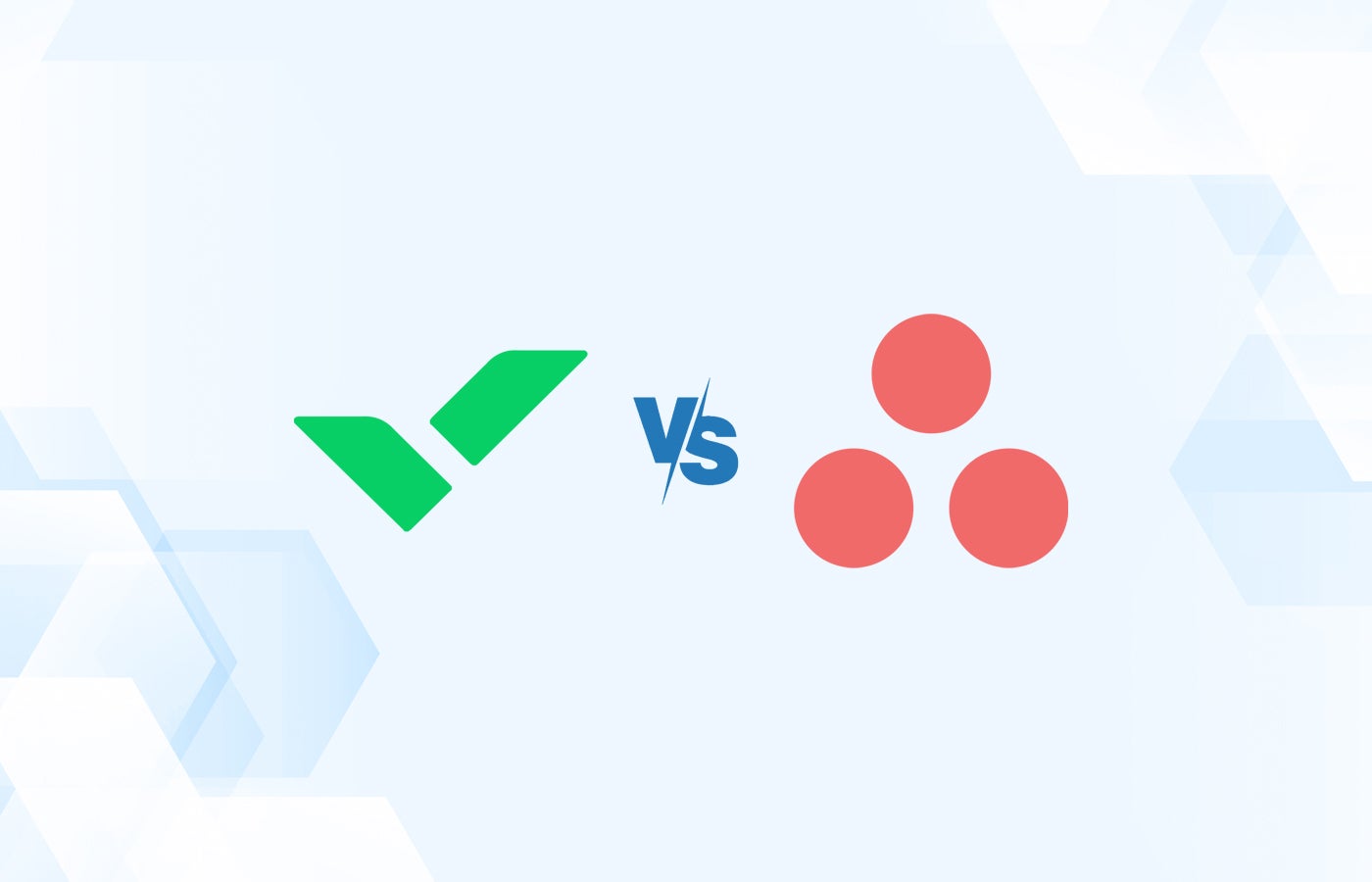Wrike and Asana are two of the most popular project management software solutions today, leaving many people to wonder, what’s the difference between them and is one better than the other? Both tools are fantastic for managing projects, but after trying them out, I found that there are slight differences in each project management solution’s features and approach.
- Wrike is the better option for larger businesses that need more features and higher level of customization, and companies that prefer phone and live chat support.
- Asana is a great choice for small businesses that want a project management tool that balances functionality with ease of use, and teams that are okay with support ticket help only.
Wrike vs. Asana: Comparison table
| Task management | ||
| Team collaboration | ||
| Customization | ||
| Integations | ||
| Reporting | ||
| Time tracking | ||
| Unlimited storage | ||
| Free plan | ||
| Starting price (billed monthly) | ||
Wrike and Asana pricing
Both Wrike and Asana offer forever free plans — which puts them on our list of top free project management software — as well as two mid-tier plans with transparent pricing and two enterprise plans with custom pricing.
Wrike pricing
The prices of Wrike’s five plans are as follows:
- Free: $0 per user per month for unlimited users.
- Team: $9.80 per user per month.
- Business: $24.80 per user per month.
- Enterprise: Contact sales for a custom quote.
- Pinnacle: Contact sales for a custom quote.
A 14-day free trial is available for all of Wrike’s paid plans. See our full Wrike review for a more detailed breakdown of these pricing plans and which features are included in which tier.
Asana pricing
The prices of Asana’s five plans are as follows:
- Basic: $0 per user per month for up to 10 users.
- Premium: $10.99 per user per month, billed annually, or $13.49 per user per month, billed monthly.
- Business: $24.99 per user per month, billed annually, or $30.49 per user per month, billed monthly.
- Enterprise: Contact sales for a custom quote.
- Enterprise+: Contact sales for a custom quote.
A 30-day free trial is available for the Premium and Basic plans. See our full Asana review for a comprehensive breakdown of these pricing plans and which features are supported on each plan.
Feature comparison: Wrike vs. Asana
Project management
Wrike and Asana are excellent tools for managing projects, and they rank very high based on their features. Our expert TechRepublic reviews gave Asana a 4.9/5 and Wrike a 5/5. With both platforms, I found it very easy to add tasks, create subtasks, sort them by due date, attach files and set deadlines.
Both Wrike and Asana also offer multiple project views, including list view, Kanban boards and Gantt charts. But Asana’s project views have a simpler, more straightforward design; whereas Wrike’s Kanban boards and Gantt charts look more complex and colorful.
One of the notable differences between Wrike and Asana used to be that Wrike included native time-tracking features in its Business plan, while Asana did not offer it at all. Asana later started incorporating time tracking in order to better compete with Asana alternatives, though you’ll have to upgrade to at least the Advanced plan first to enjoy it. Given that these two plans are almost exactly the same price, they’re pretty comparable.
Wrike’s reporting features are also more robust than Asana’s. Asana offers a reporting dashboard with some simplified widgets, but that’s the extent of its analytic capabilities. Wrike’s dashboards contain far more information and are more customizable. Wrike also offers multiple reporting templates to supplement the dashboards, or you can create your own custom report from scratch.

Team collaboration
Both Wrike and Asana make it a breeze to comment on tasks, upload attachments and create shared team calendars. These two project management tools also offer robust collaboration tools such as proofing, keeping feedback in a single place ,so you don’t have to constantly switch to other apps like Google Docs. Both tools also integrate with Outlook and GMail, making them ideal for teams who prefer to communicate that way.
But there are also some differences in what Wrike and Asana could offer. For example, with Wrike, teams can edit task descriptions simultaneously via the live editor; Asana does not have this option. Wrike’s proofing feature is also more advanced than Asana’s, enabling teams to track comments across multiple versions. Wrike’s proofing feature supports 30+ creative file types, while Asana’s only supports five. The latter automatically creates a subtask for each proofing comment, which is a bit odd.
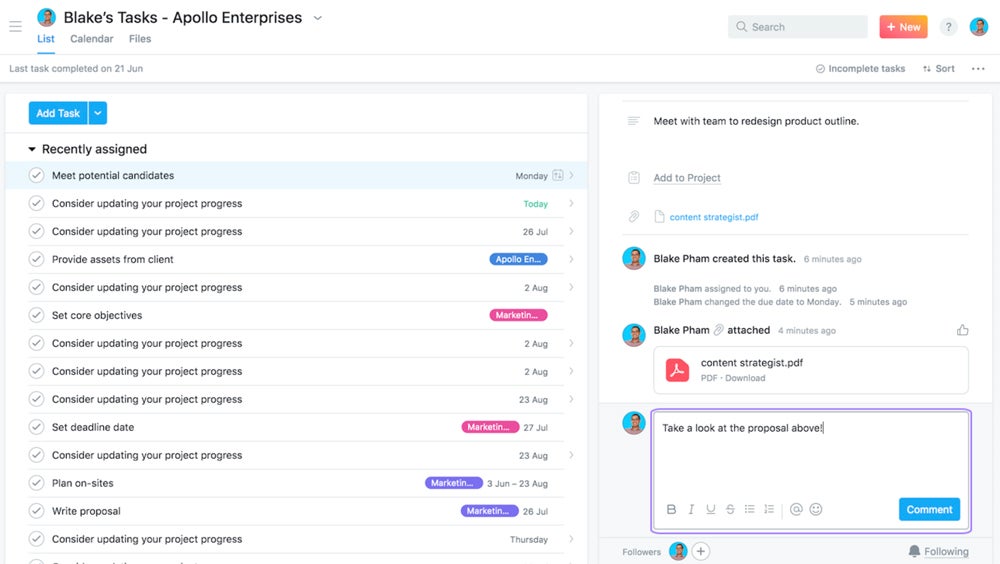
Customization and automation
No two organizations manage projects exactly the same way, which is why customization is critical when deciding on which project management software to use. Wrike and Asana offer many personalization options teams can maximize to tailor their workspaces to their needs. But Wrike has an edge in terms of the level of customization it allows its users to make. For instance, Wrike offers far more project views than Asana (15+) and each one can be customized to the team’s or user’s needs. Wrike also allows you to replace the Wrike logo on email notifications with your company logo, which is useful for companies that work with many external clients.
Both project management tools give teams the option to build custom workflows to automate repetitive manual tasks. In Asana, teams can use the Workflow Builder, a visual tool for creating automated work processes. In Wrike, teams can use the Automation Engine for the same purpose.

Integrations
Wrike and Asana both boast a large library of integrations, but Wrike offers twice as many integrations as Asana. Wrike allows integration with 400+ third-party apps, while Asana integrates with only 200+ tools.
Popular integrations for Wrike include Salesforce, Microsoft Teams, Google Drive, Gmail, Jira and Slack. Popular integrations for Asana include all of these options, as well as Adobe Creative Cloud, Tableau, Clockwise and Zapier. If you need even more integrations than this, check out our list of the best Wrike alternatives.
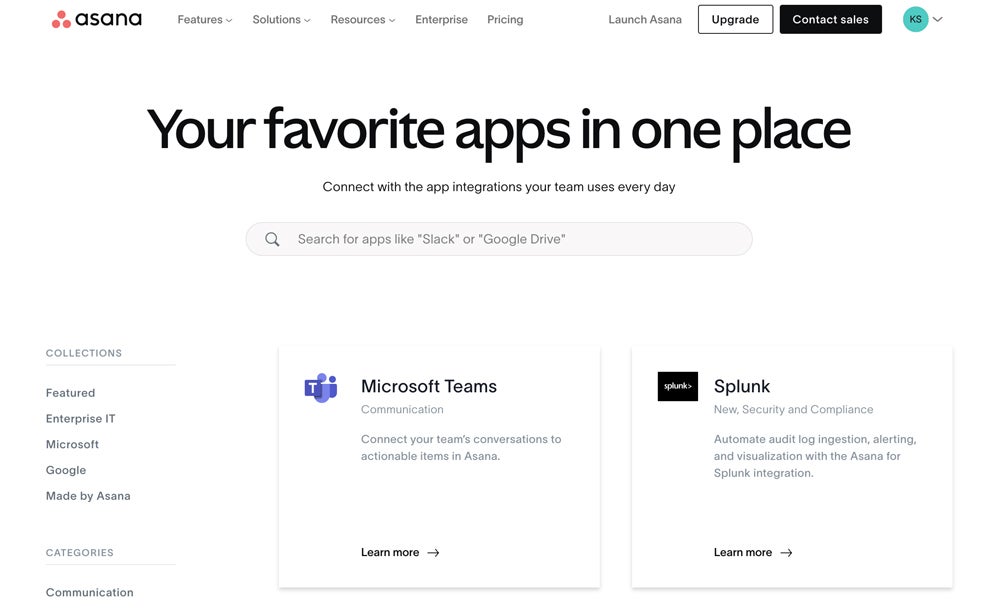
Ease of use
Both Asana and Wrike scored a perfect 5/5 for ease of use. Despite its wide array of features, Wrike is very easy to set up and use. Both Wrike and Asana offer plenty of templates users can choose from, but it also wouldn’t take long to build a project from scratch on any of these two tools as they are fairly easy to navigate. Their layouts are also quite logical, making it quick to find whatever features you need.
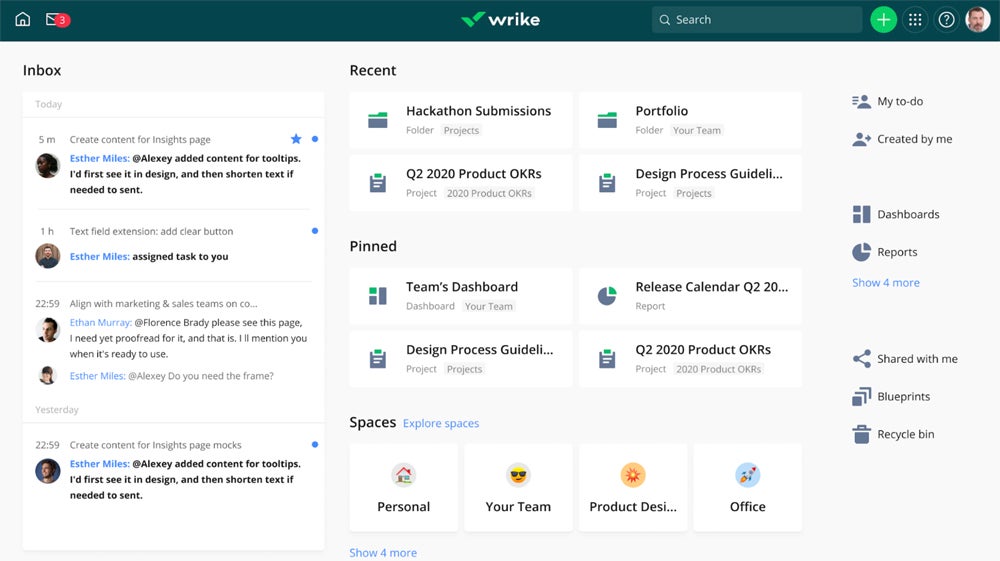
Customer support
Customer support is one area where Wrike clearly outshines Asana, with Wrike scoring a full 5/5 and Asana only getting 2.9/5. The reason being that Asana does not provide assistance via phone or live chat, only support tickets via the chat bot. Meanwhile, Wrike’s paid users can get help 24/7 through web forms, help center chats, a dedicated phone line and workspace chat channels. Both platforms do offer a self-service knowledge base or help center, as well as live training options.
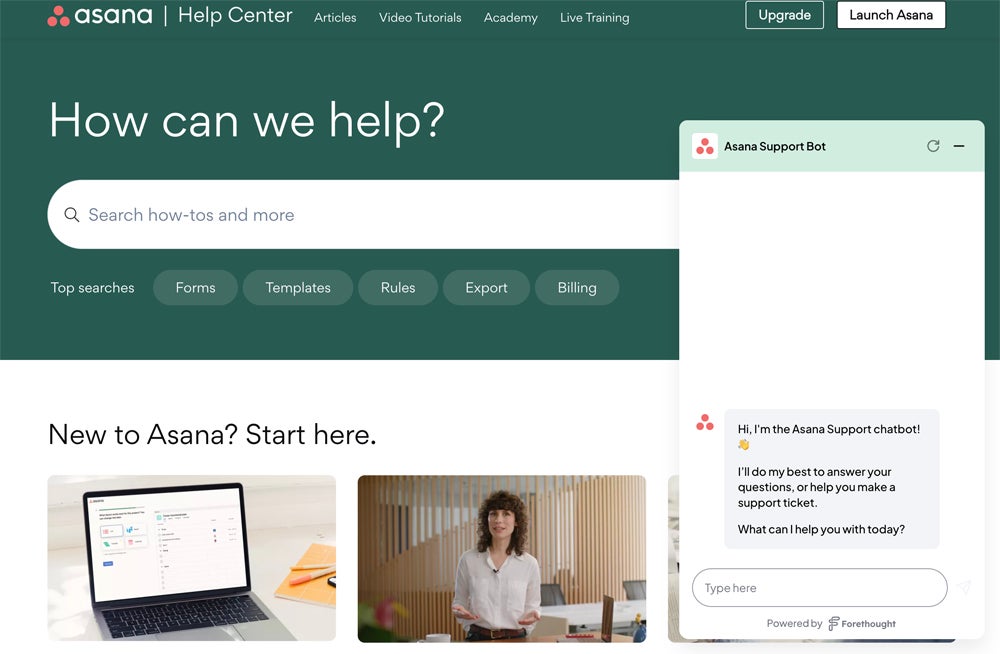
Security
Both Asana and Wrike come with robust security tools, especially on their Enterprise plans. Security measures include data encryption, role-based access controls, multi-factor authentication, single sign-on and compliance certifications. Wrike also offers an optional add-on called Wrike Lock, which allows your company to manage its own encryption keys.

Wrike pros and cons
Pros of Wrike
- Roadmap planning function.
- Strong user community.
- Phone and live chat support.
- Highly scalable up to complex projects.
- Powerful workflow automation capabilities and analytics.
Cons of Wrike
- Better for more complex workloads.
- Number of features can be overwhelming.
- Dashboard options are limited.
- High-price premium tier means smaller companies will miss the best features.
Asana pros and cons
Pros of Asana
- Ease of project setup and integration with clients.
- Intuitive, user-friendly interface.
- Easy to assign tasks and tagging.
- User-friendly tools such as drag-and-drop.
- Portfolios feature lets users customize and group projects.
Cons of Asana
- Powerful features locked in the premium price tier.
- No phone or live chat support available.
- Limited scalability for large teams.
- No source-code integration.
Should your organization use Wrike or Asana?
Choose Wrike if . . .
- You need a very high level of customization.
- You are a large business that needs a lot of project management features.
- You want a more colorful interface.
- You need even more integrations than Asana.
- Your team needs phone and live chat support.
Choose Asana if . . .
- You are a smaller business looking for a project management software that’s not too overwhelming.
- You want a tool with a simpler interface.
- You don’t need more than Asana’s 200+ integrations.
- You are not particularly concerned about the method by which the tool provides support.
Thankfully, both Asana and Wrike offer free trials, so you can test them before committing to a plan. They also offer forever free plans if you want to try using them over a longer period of time and are okay with a limited feature set. If neither tool fits your needs, there are plenty of other project management tools out there. Check out our top picks for the best project management software for 2024.
Review methodology
To compare these two platforms, I read product documentation, consulted user reviews and tested the software hands-on. I considered factors such as price, user friendliness, user interface, project views, task management and more.
